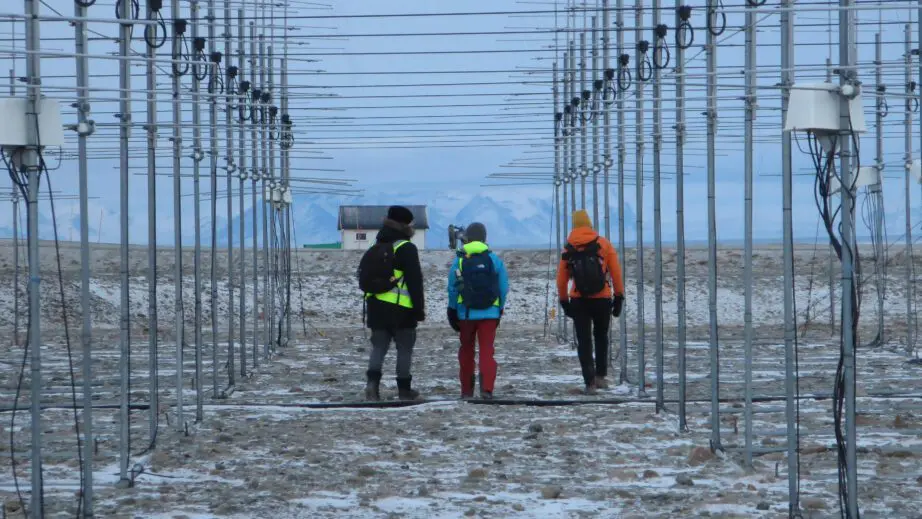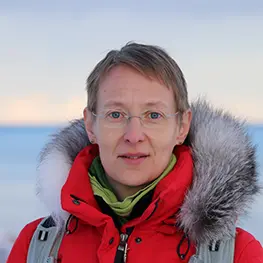AGF-210 The Middle Polar Atmosphere (15 ECTS)
ID:
AGF-210
CREDITS:
15 ECTS
APPLICATION DEADLINE:
March 01, 2025
START DATE:
August 11, 2025
END DATE:
December 12, 2025
COURSE PERIOD:
Autumn semester. Teaching block 5-7

SOUSY-radar in Adventdalen. Photo: Noora Partamies
| Grade: | Letter grade (A through F) |
| Course Cost: | Fieldwork, max NOK 900 (up to 3 days x NOK 300 per overnight stay) |
| Course Capacity Min/Max: | 7/13 students |
| Language of instruction: | English |
| Examination support material: | Bilingual dictionary between English and mother tongue, non-programmable calculator |
Course requirements
60 ECTS within the fields of mathematics and physics or a related discipline. The applicant must be enrolled in a programme at Bachelor level, or document that the courses are approved into the applicant’s current study programme.
The course should be combined with AGF-223 Remote sensing and space instrumentation.
These introductory courses are suitable for students in (any sub-field of) physics, astronomy, chemistry, engineering, geophysics, meteorology, environmental sciences or another related topic with basics physics skills.
Academic content
This course leads to basic understanding of key properties and processes of the polar region stratosphere and mesosphere, the polar middle atmosphere. These include radiation, chemistry, dynamics and circulation, particle precipitation, aerosol physics and wave activity. The propagation and effect of planetary and gravity waves will be described. The importance of waves in connecting the middle atmosphere and the troposphere are discussed. Special attention is paid to how radar, lidar, optical and rocket instrumentation can be used to investigate the middle layers of the atmosphere.
The students will get an introduction to the physics of aerosol particles and their role in formation of noctilucent clouds, polar stratospheric clouds, and mesospheric radar echoes. Measurements of stratospheric and mesospheric ozone will be introduced. The field component consist of a number of excursions to relevant research facilities nearby Longyearbyen, such as atmospheric radar sites and the Kjell Henriksen Observatory (KHO) as well as an excursion to Ny-Ålesund.
Learning outcomes
Upon completing the course, the students will:
Knowledge
- be able to explain why all parts of the Earth’s atmosphere must be considered in climate studies and long-term weather forecasts
- be able to describe how solar particle influx, UV radiation and meteoric smoke particles can affect the chemistry and dynamics of the atmosphere
- have obtained a solid overview on how different remote sensing and in-situ measurement techniques can be used to study the middle atmosphere.
Skills
- have experience in examining the effects of radiation, chemistry, solar particle influx, aerosols and waves on the middle atmosphere using theoretical calculations and available measurements
- have the ability to analyse atmospheric data, using specialized software and by writing scripts in Python, Matlab or other similar programming languages.
General competences
- describe the key processes in the middle atmosphere
- describe the driving forces of the middle atmospheric processes
- explain connections between the middle atmospheric phenomena and processes in the upper and lower atmosphere.
Learning activities
The course extends over a full semester. Initially, students attend two days of compulsory Arctic survival and safety training.
Through interactive lectures with experts in different topics the students will achieve basic knowledge about key physical processes and theoretical tools necessary to understand the observations during the fieldwork. Exercises will include visualizing and interpreting measurements and solving theoretical problems to understand the physics behind the observed phenomena. During the field trips the students will be introduced to a full range of scientific instrumentation and measurements techniques commonly used within the field.
Summary
- Total lecture hours: Ca. 70 hours.
- Total exercise hours: Ca. 40 hours.
- Fieldwork / excursions: 5-7 days.
Compulsory learning activities
All compulsory learning activities must be approved in order to sit the exam.
- Fieldwork
- Written report
- Concept map
Assessment
- All assessments must be passed in order to pass the course.
- Each assessment is graded, and subsequently combined into a single grade. Partial grades for each assessment will be available.
| Method | Duration |
Percentage of final grade
|
| Written exam | 4 hours | 80% |
| Web quizzes | 20% |
Student life



